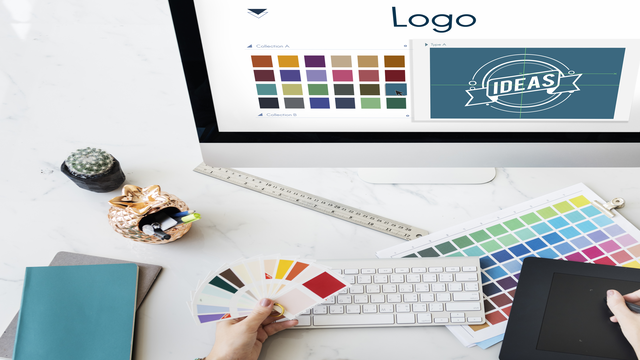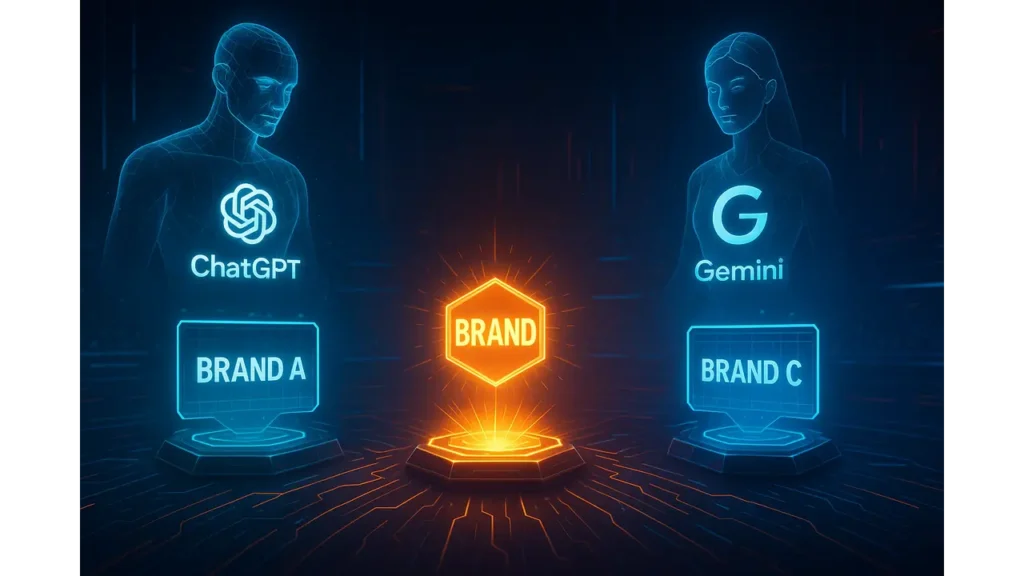What makes a brand unforgettable? The answer lies in the synergy between design and branding. Design and branding are no longer optional—they’re essential. While design captures the visual essence of a brand—logos, color palettes, and imagery—branding shapes the emotional and intellectual connection with its audience. Together, they create a narrative that resonates across platforms and leaves a lasting impression. They define a company’s personality and establish trust in a crowded digital landscape.
Every successful brand, from tech giants to boutique startups, relies on a strategic combination of these two pillars. This blog explores the key components of design and branding, breaking down essential elements like visual identity, brand voice, and color psychology. Whether you’re a startup looking to craft a bold first impression or an established brand seeking to refine your image, understanding these building blocks is crucial for success.
Discover the secrets behind building a brand that not only stands out but stays etched in your audience’s mind. This guide takes you beyond the basics, showing you how to seamlessly align your design with your brand’s values, maintain a consistent presence across platforms, and craft an identity that fosters unwavering customer loyalty. Packed with real-world success stories and actionable strategies, it’s your ultimate playbook for elevating your brand. Keep reading to uncover the secrets of effective design and branding!
If you’re ready to elevate your brand and harness the power of design and branding synergy, look no further than Wodo Digital’s Design and Branding Services. From crafting visually stunning logos to building a cohesive brand strategy that resonates with your audience, Wodo Digital specializes in turning ideas into iconic identities. Whether you’re starting fresh or refining an established brand, their team delivers tailored solutions designed to make a lasting impact in today’s competitive digital landscape. Take the next step in defining your brand—explore how Wodo Digital can help bring your vision to life!
Table of Contents
Understanding Design and Branding
At their core, design and branding are two sides of the same coin, each playing a pivotal role in building a strong and recognizable brand identity. Design represents the visual and creative expression of a brand. It encompasses a wide range of elements—from logos and color palettes to website layouts, packaging, and promotional materials. Design is the first thing people notice about a brand; it’s the visual language that communicates the essence of a business at a glance. Whether it’s the sleek lines of a logo or the user-friendly layout of a website, design sets the tone for how a brand is perceived. It’s the immediate impression that shapes how customers engage with a business.
On the other hand, branding goes beyond visuals. Branding is about shaping the overall perception of a company—how people feel, think, and talk about the brand. It’s the personality behind the design, the promise a company makes to its customers, and the emotional connection it builds over time. Branding tells the story of a business, aligning its mission, values, and voice with every customer interaction.
Together, design and branding work in harmony to establish trust, evoke emotions, and build meaningful connections with the audience. A strong, cohesive brand identity creates a lasting impression, guiding customers through their journey from awareness to loyalty. For businesses looking to thrive in today’s competitive market, understanding and leveraging these two aspects is crucial. When design and branding align seamlessly, they have the power to differentiate a company from its competitors, fostering long-term relationships with customers and ensuring sustained growth.
Core Components of Design
The core components of design are the building blocks that shape a brand’s visual identity and ensure consistency across all platforms.

Visual Identity
Visual identity forms the backbone of how a brand is recognized. It’s the amalgamation of various design elements like the logo, fonts, and layouts that collectively represent the brand’s essence. For example, Apple’s minimalist aesthetic signals innovation and elegance, while Coca-Cola’s script logo and red color evoke nostalgia and happiness. A strong visual identity ensures that your brand is not only noticed but remembered.
Typography
Typography is more than just selecting a font; it’s about choosing a typeface that aligns with your brand’s personality and enhances its overall message. Whether bold and modern or elegant and classic, the font you choose impacts how your message is received. Serif fonts, like Times New Roman, convey tradition and trustworthiness, while sans-serif fonts, such as Helvetica, offer a clean and contemporary feel. Script fonts, on the other hand, express creativity and sophistication. By carefully selecting the right typography, you ensure that your design communicates the intended tone and strengthens the emotional connection with your audience.
Color Palette
Color palette plays a crucial role in branding by evoking emotions and influencing perception. Each color carries a psychological impact that can shape how a brand is perceived. For instance, red represents energy, passion, and urgency, often used by brands like Coca-Cola to create excitement. Blue conveys trust, calmness, and reliability, making it ideal for companies like Facebook that aim to build a sense of security. Green symbolizes growth, health, and eco-friendliness, a choice often associated with brands like Starbucks that emphasize sustainability. An effective color palette not only ensures consistency across all platforms but also aligns with the brand’s core values, helping to communicate its message clearly and consistently.
Imagery and Graphics
Imagery and graphics play a vital role in bringing a brand’s story to life, adding depth and personality to its visual identity. Consistent use of images, icons, and illustrations—whether in product photos, social media graphics, or website banners—strengthens brand recognition and reinforces the message. For instance, Airbnb uses warm, human-centered imagery to reflect inclusivity and a sense of belonging, which aligns with their brand values. Well-thought-out visuals not only elevate communication but also make branding more relatable and engaging for the audience, helping to create a deeper emotional connection with the brand.
Essential Elements of Branding
To create a memorable brand, you must focus on the essential elements of branding that define its personality and value. These include the brand name, logo design, and a consistent brand voice that speak directly to your audience.

Brand Name
Your brand name is more than just a label; it’s the heartbeat of your identity and the first impression your audience will remember. A truly great brand name checks three crucial boxes. It’s memorable, like the simplicity of Nike, making it easy for customers to recall. It’s relevant, resonating with your industry and purpose, as LinkedIn does with professionals. And it’s unique, standing out from the crowd, much like Spotify, whose name captures innovation and creativity. Crafting the perfect brand name takes time, but the payoff is immense—it sets the tone for your mission, communicates your value, and positions your business to stick in the minds of your audience.
Logo Design
Your logo is the visual cornerstone of your brand—a powerful symbol that tells your story at a glance. The best logos share key traits that make them unforgettable. They are simple, like McDonald’s golden arches, ensuring they are easy to recognize and versatile in any setting. They are also scalable, working seamlessly across all mediums, from towering billboards to compact business cards. Most importantly, they are timeless, steering clear of fleeting trends to remain relevant for decades. A well-designed logo doesn’t just represent your brand; it builds trust, evokes loyalty, and becomes an enduring icon that customers instantly associate with your business.

Tagline or Slogan
A tagline is your brand’s promise distilled into a few unforgettable words—a powerful expression of your values that sticks in the minds of your audience. Think of Nike’s “Just Do It,” a motivational call to action that inspires confidence and determination, or Disneyland’s “The Happiest Place on Earth,” which evokes joy and aspiration. A great tagline does more than describe; it resonates emotionally, leaving a lasting impression. Crafting a tagline that truly connects means understanding what matters most to your audience and translating it into a message they’ll never forget. It’s your brand’s story, summed up in a way that sparks connection and loyalty.
Brand Voice and Tone
Your brand voice is the personality behind your words—the way your brand “speaks” to its audience—while your tone adjusts based on the context or platform. A consistent voice builds familiarity and trust, while a well-chosen tone ensures your message resonates across different situations. For instance, a playful voice, like Skittles, appeals to a younger, fun-loving audience, while a professional voice, exemplified by IBM, is ideal for corporate clients. An empathetic voice, such as Dove’s, fosters emotional connections by addressing deeper human values. Defining and maintaining a clear brand voice ensures your communication feels authentic and relatable, no matter where or how you engage with your audience.
Integrating Design and Branding
A seamless blend of design and branding is essential for a strong, unified identity. By ensuring consistency across all channels and aligning designs with the brand’s core values, businesses can enhance both credibility and audience connection.

Consistency Across Platforms
Consistency across platforms is essential for building a strong, cohesive brand that audiences can trust, recognize, and feel emotionally connected to instantly. It involves maintaining uniformity in design elements, tone, and messaging across all channels, whether it’s your website, social media, email campaigns, or print materials. A consistent brand experience ensures that no matter where customers interact with your business, they encounter the same values, professionalism, and attention to detail. For example, if your Instagram features vibrant visuals and a friendly tone, your website should reflect the same energy, style, and personality to avoid confusing your audience. This seamless alignment reinforces trust and reliability, making your brand appear well-organized, dependable, and in sync with its mission. Customers are more likely to remember and connect with a brand that delivers a unified experience. Ultimately, consistency doesn’t just enhance your aesthetic appeal; it establishes credibility, fosters loyalty, and strengthens the emotional connection between your brand and its audience, ensuring long-term success.
Aligning Brand Values with Design
Aligning brand values with design is essential for creating a cohesive, impactful, and authentic brand identity. The design choices you make should not only be visually appealing but also communicate the core principles, vision, and mission of your business. For example, a brand focused on sustainability might choose earthy tones like green and brown, along with natural textures, to reflect its deep commitment to the environment. Meanwhile, a technology-driven company might opt for sleek, minimalist designs that convey modernity, innovation, and cutting-edge solutions. When design and brand values are in perfect harmony, it fosters a deeper emotional connection with your audience, as they can clearly see the brand’s essence in every interaction. This alignment ensures that your messaging feels genuine, resonates emotionally, and builds trust and loyalty over time. Ultimately, aligning your design with your values strengthens your brand’s position in the market, making it not only memorable but also meaningful and impactful to consumers.
Case Studies of Successful Design and Branding
Building a memorable brand requires more than just a logo or a catchy slogan; it demands a cohesive blend of design and branding elements that reflect a company’s core values. Some companies have truly mastered the art of combining effective design with strategic branding. Let’s explore some of the most iconic examples of brand design done right.
Coca-Cola

Coca-Cola is a prime example of how consistency in branding creates lasting recognition. The iconic red color and flowing Spencerian script have remained virtually unchanged for decades, making it one of the most recognizable brands globally. The visual identity—defined by the bold red and white color palette—evokes feelings of joy, energy, and nostalgia, perfectly aligning with Coca-Cola’s branding message of bringing people together in moments of happiness. Its logo design, a timeless symbol, and memorable brand name further cement its place in consumer minds. But Coca-Cola’s success goes beyond design; it’s the brand’s consistent messaging that strengthens the emotional connection with its audience. Whether through holiday campaigns, global sporting events, or everyday interactions, Coca-Cola’s tagline, “Open Happiness,” reinforces its mission of unity and positivity. This alignment of design elements and messaging, combined with a warm and inviting brand voice, ensures that Coca-Cola’s presence feels familiar, joyful, and genuine across all platforms, creating Coca-Cola as a household name capable of creating instant recognition wherever it’s seen.
Apple
Apple has set the standard for minimalist design, with its clean aesthetic extending across products, packaging, and digital platforms. The company’s visual identity is rooted in sleek lines and simplicity, using a monochromatic color palette that exudes sophistication and innovation. From the sleek devices to the store layouts, every design choice reflects Apple’s commitment to premium quality and forward-thinking technology. The brand’s modern sans-serif typography reinforces this cutting-edge look, while its simple logo—a recognizable apple shape—embodies the elegance and minimalism at the core of its identity. Apple’s brand name is synonymous with luxury, and its iconic tagline, “Think Different,” perfectly encapsulates the company’s innovative spirit. This consistency across design elements and messaging creates a cohesive experience that appeals to a global audience, reinforcing Apple’s position as the leader in modern technology. The brand voice remains refined and aspirational, ensuring customers continue to trust Apple as a symbol of high-end, groundbreaking technology. Whether on a product, website, or advertisement, every interaction with Apple feels unmistakably sleek, sophisticated, and innovative.
Nike
Nike is a prime example of powerful branding, seamlessly combining simplicity with strength, determination, and inspiration. The brand’s visual identity is instantly recognizable, thanks to its iconic swoosh logo, which conveys a sense of motion, energy, and performance. This sleek and clean design is reinforced by bold typography in its tagline, “Just Do It,” a motivational phrase that resonates deeply with athletes and anyone striving to push past their limits. The color palette, often incorporating black, white, and red, underscores Nike’s dynamic, high-energy persona, while its brand name is synonymous with athletic excellence and performance. The logo design, one of the most successful in history, symbolizes drive and ambition, further connecting with consumers’ aspirations. Nike’s tagline, “Just Do It,” embodies empowerment and perseverance, positioning the brand as more than just sportswear—it’s a lifestyle choice focused on achieving greatness. The brand voice is direct, inspiring, and determined, fostering an emotional bond with athletes and fitness enthusiasts worldwide, and making Nike a symbol of strength, ambition, and success.
Airbnb
Airbnb took a bold step in rebranding to reflect its core values of inclusivity and belonging, transforming the travel experience with a fresh logo and the powerful slogan, “Belong Anywhere.” The company’s visual identity, defined by warm, welcoming colors and human-centered design, evokes a sense of comfort and connection, making travelers feel at home no matter where they go. The typography is modern yet friendly, enhancing the approachable nature of the brand. Airbnb’s logo, a simple heart-shaped “A,” symbolizes the idea of community and belonging, embodying the brand’s mission of creating meaningful connections. The brand name is short, memorable, and globally recognized, while its tagline speaks directly to its core value of inclusivity. Airbnb’s brand voice is warm, authentic, and accessible, ensuring that every communication feels personal and inviting. Together, these elements create a cohesive, engaging experience that resonates with a global audience, fostering a sense of shared experience and making Airbnb more than just a travel service—it’s a platform for belonging and connection.
Slack
Slack has perfected the balance of fun and professionalism, making it a standout in the productivity tool space. Its vibrant color palette, including energetic shades of purple and green, injects energy into the workplace while maintaining a clean, modern design. The simple, readable typography keeps the brand professional yet approachable, and the playful yet sleek logo mirrors Slack’s mission of fostering enjoyable workplace communication. With its brand name being catchy and modern, and its tagline, “Be Less Busy,” positioning Slack as the solution to productivity, the brand’s voice is casual, conversational, and helpful. This tone promotes a collaborative environment while maintaining efficiency, making Slack a go-to choice for teams worldwide. The overall design, with its user-friendly interface, communicates both creativity and productivity, and the brand’s accessible, team-oriented approach ensures it resonates with users globally. Through a perfect blend of fun, clarity, and professionalism, Slack has created an environment where work feels less like work, helping teams stay connected and efficient.
FAQ’s
What makes a brand memorable?
A memorable brand is built on consistency, a clear message, a unique logo, and a strong visual identity that resonates with its target audience.
How do I choose the right color palette for my brand?
Choose colors that reflect your brand’s values and evoke the emotions you want your audience to feel. Research color psychology to align with your message.
What are the essential components of a strong brand?
A strong brand includes a clear brand name, memorable logo, consistent color palette, distinctive typography, and a cohesive brand voice and tone.
How do I know if my branding is effective?
Effective branding resonates with your target audience, drives recognition, builds trust, and aligns with your business goals. Feedback and analytics can help measure its success.
Should my branding be consistent across all platforms?
Yes, consistency across platforms ensures your audience recognizes your brand easily, building trust and reinforcing your identity.
How do I create a logo that stands out?
A standout logo is simple, versatile, and aligned with your brand values. It should be easily recognizable and work well across various platforms and sizes.
Why is branding important for small businesses?
Branding helps small businesses stand out, build trust, and connect with customers emotionally, making it easier to compete with larger companies.
What’s the difference between a logo and a visual identity?
A logo is a key symbol representing your brand, while visual identity includes the overall design system—colors, typography, imagery, and more.
How can I make my brand stand out from competitors?
Focus on unique design elements, an authentic message, and consistent branding that communicates what makes your business different.
Conclusion
Design and branding are not just about aesthetics; they are about communication, emotion, and connection. By mastering the core components—visual identity, typography, color, and more—and integrating them into a cohesive strategy, businesses can craft brands that resonate deeply with their audience. Whether you’re launching a startup or revitalizing an established brand, investing in thoughtful design and branding pays dividends in loyalty, recognition, and growth. A well-designed brand tells a compelling story, and when that story aligns with your core values, it creates an authentic experience that consumers can connect with.
By aligning your visual elements with your brand values and maintaining consistency across platforms, you can build a lasting impression that stands out in today’s crowded marketplace. The brands we admire—Coca-Cola, Apple, Nike, Airbnb, and Slack—are all perfect examples of how powerful design and branding can be when done right. They show us that great branding goes beyond a logo or color palette; it’s about creating an emotional bond with your audience and delivering a consistent message across every touchpoint. So, take the time to craft a brand that is not only visually appealing but deeply meaningful—your audience will recognize, trust, and return to it for years to come.












